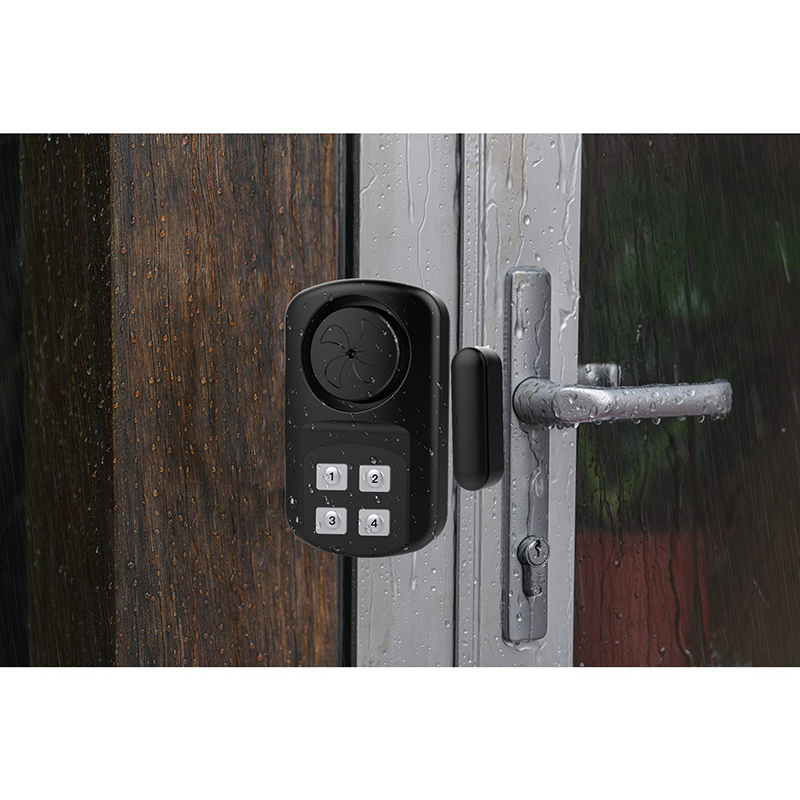경보 시스템은 기업 보안 도구 상자 중 하나일 뿐이지만, 매우 중요한 도구입니다. 간단한 경보기만 설치하면 침입자를 쫓아낼 수 있을 것 같지만, 반드시 그런 것은 아닙니다.
마지막으로 자동차 경보음을 들었던 때를 떠올려 보세요. 혹시 놀라셨나요? 경찰에 신고하셨나요? 누군가 소리에 반응해 조사하러 오는 것을 보셨나요? 아마 여러분과 주변 사람들은 자동차 경보음에 너무 익숙해져서 그냥 무시하고 있을 겁니다. 인구 밀집 지역에서 건물 경보음이 울릴 때도 마찬가지입니다. 사무실이 외딴곳에 있다면 아무도 듣지 못할 가능성이 높습니다. 그렇기 때문에 경보 시스템 모니터링은 재산과 자산을 보호하는 데 매우 중요합니다.
간단히 말해서, 말 그대로입니다. 일반적으로 유료 서비스를 제공하는 회사가 모니터링하는 경보 시스템입니다. 소규모 사업체의 경우, 모니터링 경보 시스템의 기본 기능은 침입 감지 및 관계 당국에 경보를 발령하는 것입니다.
이 시스템은 일단 작동되면 센서를 사용하여 문이나 창문이 열렸는지, 창문이 파손되었는지, 또는 건물 내부(그리고 때로는 외부)에서 움직임이 있는지 감지합니다. 이 센서들은 경보와 함께 설정된 경보(감시 회사 또는 휴대폰)를 모두 작동시킵니다. 이 시스템은 유선 또는 무선으로 작동하며, 회선 단선이나 인터넷 연결이 끊어질 경우를 대비하여 셀룰러 백업 기능이 포함될 수 있습니다.
이 외에도 시스템에는 다양한 유형의 센서, 다양한 수준의 경보, 그리고 다른 보안 시스템 및 스마트 오피스 기술과의 통합 기능이 포함될 수 있습니다. 많은 소규모 기업의 경우 이러한 추가 기능이 필요하지 않을 수 있습니다. 하지만 고위험 산업이나 지역에 종사하는 경우, 비즈니스 보안을 가장 효과적으로 강화할 수 있는 예산을 책정해야 할 수도 있습니다. 가장 적합한 시스템과 공급업체를 선택하려면 보안 요구 사항과 예산을 이해하는 것이 중요합니다.
예산이 부족하다면 자체 보안 시스템 설치를 고려해 보세요. 대부분의 경우, 침입자로부터 사업을 보호하는 데 필요한 장비는 온라인에서 쉽게 구할 수 있습니다. 무료 시스템은 기본적으로 장비만 포함되며, 설치 및 모니터링은 사용자가 직접 처리해야 한다는 것을 의미합니다.
이 접근 방식의 가장 큰 장점은 비용 절감입니다. 시스템은 대부분 무선으로 작동하며 설치도 비교적 간단합니다. 하지만 자체 모니터링 방식의 문제점은 모든 보안 경보가 사용자에게 전달된다는 점입니다. 대부분의 시스템은 휴대폰을 통해 경보를 수신합니다. 사용자는 24시간 연중무휴 경보 원인을 확인할 수 있어야 하며, 필요한 경우 관계 기관에 연락해야 합니다. 경보 시스템을 효과적인 보안 도구로 만들려면 모니터링이 필수적이므로, 이 부분에서 비용을 절감해야 하는지 고려해야 합니다. 또한, 시간의 가치를 고려하고 모든 경보를 확인할 수 있는 시간을 현실적으로 고려하는 것도 중요합니다.
한 가지 방법은 직접 설치할 수 있지만 모니터링 서비스를 제공하는 업체의 시스템을 사용하는 것입니다. 이렇게 하면 자체 모니터링이 적합하지 않다고 판단될 경우, 해당 업체의 전문 모니터링 서비스로 업그레이드할 수 있습니다.
예산에 맞는 옵션을 제공하는 업체를 찾으려면 주택용 서비스를 제공하는 업체를 고려해 보세요. 많은 업체가 중소기업을 위한 경보 시스템과 모니터링 서비스도 제공합니다. 홈 알람 보고서는 Abode를 자가 모니터링 시스템 옵션으로 추천하며, 경쟁력 있는 가격으로 전문 모니터링 서비스로 업그레이드할 수 있는 잠재력을 가지고 있습니다. 이 보고서에서는 SimpliSafe도 비용 효율적인 업체로 추천했습니다.
전문적인 모니터링 서비스를 원하신다면 다양한 옵션을 선택하실 수 있습니다. 비용이 문제라면 다음 사항을 고려하세요.
장비. 다양한 옵션이 있으므로 무엇이 필요한지 파악하고 경보 시스템과 모니터링이 전반적인 비즈니스 보안 프로토콜에 어떻게 부합하는지 이해하는 것이 중요합니다.
설치. 자가 설치 vs. 전문가 설치. 유선 시스템은 전문가의 설치가 필요하며, ADT와 같은 일부 기존 업체는 설치 및 유지 보수 서비스를 이용해야 합니다.
시스템 장비는 다양하며, 침입 탐지 이상의 기능을 제공하는 장비도 있습니다. 경보 시스템의 적용 범위를 파악하기 위해 전체적인 보안 및 스마트 오피스 요구 사항을 고려하는 것이 중요할 수 있으며, 통합 보안 솔루션을 제공하는 업체와 협력하는 것이 좋습니다.
스마트 홈에 점점 더 익숙해지면서 스마트 오피스 기능 또한 인기를 얻고 있습니다. ADT와 같은 일부 경보 장비 회사는 스마트폰 앱을 통해 원격으로 문을 잠그거나 열거나 조명을 조절할 수 있는 스마트 오피스 기능을 제공합니다. 온도 조절 장치, 소형 가전제품, 조명도 제어할 수 있습니다. 심지어 누군가 전자키나 비밀번호를 사용하여 건물에 출입할 때 조명이 자동으로 켜지는 프로토콜을 갖춘 시스템도 있습니다.
여러 공급업체로부터 견적을 받고, 다양한 서비스 수준에 대한 옵션을 비교해보세요. 이렇게 하면 예산에 맞고 필요에 맞는 서비스를 가장 잘 평가할 수 있습니다.
공급업체 장비의 신뢰성은 어느 정도인가요? 충분히 민감하고 튼튼한가요? 고객 리뷰를 꼭 읽어보세요.
고객 지원 수준은 어떤가요? 어떻게 연락하고, 운영 시간은 어떻게 되나요? 무엇이 포함되고 어떤 서비스에 추가 요금이 발생하나요? (다시 한번, 고객 리뷰를 읽어보세요.)
장비 견적 방법을 알아보세요. 설치비에 포함되나요? 장비를 일시불로 구매하시나요, 아니면 리스로 구매하시나요?
실제로 필요한 것이 무엇인지 파악하고 추가 비용을 지불하지 마세요. 하지만 보안 위험을 해결하기 위해 추가 기능이 필요하다면 비즈니스를 보호하기 위해 그에 맞는 예산을 책정하세요.
모니터링 알람 시스템은 비즈니스 보안의 한 측면일 뿐입니다. 출입 통제, 영상 감시, 화재 경보 시스템 등 모든 보안 요구 사항을 충족할 수 있는 업체를 고려해 보세요. 2019년 사무실 보안 가이드에서 더 자세한 내용을 확인하세요.
편집자 고지: Inc.는 이 기사 및 다른 기사에서 제품과 서비스에 대해 다룹니다. 본 기사는 편집상 독립적입니다. 즉, 편집자와 기자는 마케팅이나 영업 부서의 어떠한 영향도 받지 않고 해당 제품에 대해 조사하고 기사를 작성합니다. 다시 말해, 저희 기자나 편집자에게 어떤 내용을 써야 하는지, 또는 제품이나 서비스에 대한 긍정적 또는 부정적 정보를 기사에 포함해야 하는지에 대해 지시하는 사람은 없습니다. 기사 내용은 전적으로 기자와 편집자의 재량에 달려 있습니다. 그러나 때때로 기사에 이러한 제품 및 서비스 링크를 포함할 수 있습니다. 독자가 이러한 링크를 클릭하여 제품이나 서비스를 구매하면 Inc.는 보상을 받을 수 있습니다. 기사 페이지의 다른 모든 광고와 마찬가지로 이러한 전자상거래 기반 광고 모델은 저희의 편집 내용에 영향을 미치지 않습니다. 기자와 편집자는 이러한 링크를 추가하거나 관리하지 않습니다. Inc.의 다른 광고 모델과 마찬가지로 이 광고 모델은 이 사이트에서 발견되는 독립적인 저널리즘을 지원합니다.
게시 시간: 2019년 6월 11일




